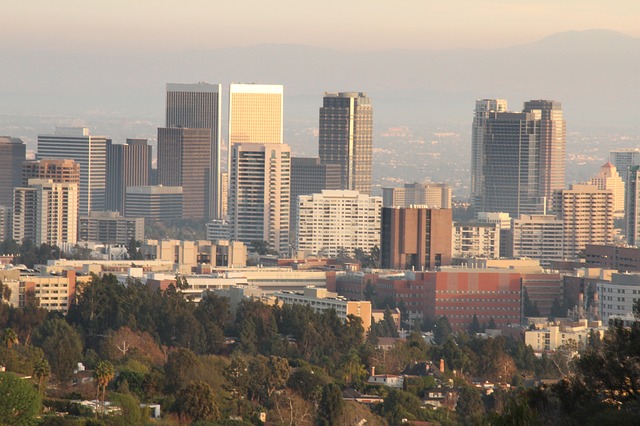
An area is experiencing a drought when drier-than-typical weather conditions last for a period of time and lead to related problems. A drought can occur when less rain than normal falls for a period ranging from weeks to even years. When this occurs, waterway and reservoir levels go down. In the short term, a drought can result in fewer crops at the end of a growing season. When a drought continues for an extended period of time, groundwater levels can be significantly depleted. A long-term drought can result in severe water supply problems for an area. The state of California and specific cities such as Los Angeles have a history of dry periods and droughts. Some scientists have labeled the current California drought a “megadrought” because of its severity.
Dry periods have been an enduring issue for the western United States, particularly California. Successive dry winters over the past several years has led to a severe drought in the state of California. In addition to the lack of precipitation, warm winter temperatures have also contributed to drought conditions. With warmer temperatures, more moisture evaporates from the soil. This, in turn, increases the need for water while also reducing the snow accumulation in the mountains. Scientists are also considering the impact that increased greenhouse gases have on drought conditions, potentially making conditions worse.
The water crisis currently hitting the western United States includes major cities such as Los Angeles. The combination of higher-than-average temperatures and less rainfall has a negative impact on water quality. It’s common for contaminants like chemicals, pesticides, heavy metals, and sediments to become more concentrated in water. Even drinking water is at risk due to issues such as increased microorganisms. Farmers struggle to grow crops with less moisture in the soil, which results in lower crop yields. Fewer crops has a negative impact on food security, which can have far-reaching implications. Wildfires can also be a serious risk during times of drought due to drier-than-normal conditions and a lack of water available for fighting fires.
The state of California and individual cities are taking steps to manage conditions created by the drought. Individual cities have instituted mandatory reductions of water usage to conserve water. One way residents can conserve water is to implement purifcation systems for reusing graywater. Examples of graywater include the water that flows down or out of sinks, bathtubs, and even washing machines after use. Collecting rainwater in rain barrels is another way to conserve water. Municipalities have imposed restrictions to limit landscape watering, use of water from outdoor hoses for washing vehicles and driveways, and operation of decorative fountains. Some people are dealing with this issue by installing synthetic grass. Others are responding to the drought with home remodeling projects. In many cases, a simple remodel can replace traditional fixtures with water-conserving fixtures to use less water in the home.
Falling water levels in California have also had a negative impact on tourism. With fewer tourists visiting parks and recreation areas, businesses have been forced to make cuts in seasonal jobs. Some traditional boating events that occur every year have been canceled due to low water levels. Lower water levels in lakes and rivers have also had a negative impact on fishing conditions. Even meager snowfalls during the winter have forced a number of ski resorts to reduce hours. The lost revenue from visiting tourists who have not spent time and money in California has been detrimental to local economies.
The following resources contain extensive information about the drought impacting California:
- California Drought Causing Valley Land to Sink
- Causes and Predictability of the California Drought (PDF)
- California’s Most Significant Droughts: Comparing Historical and Recent Conditions (PDF)
- Drought Emergency
- Major Floods and Climate Changes in California
- California Drought: House Republicans Take Aim at Water Rules
- The Man-Made California Drought
- Cause of California Drought Linked to Climate Change
- Early Years of California’s Drought May Be Linked to Lingering Effect of La Niña
- Droughts and Wildfires
- Drought in America
- Modest Dents in Long-Term California Drought
- Drought in California (PDF)
- Drought Information
- Beyond the Perfect Drought: California’s Real Water Crisis
- Factors Affecting California’s Drought
- Los Angeles Waterkeeper Evaluates Long-Term Solutions to California’s Drought (PDF)
- Los Angeles, California: Identifying and Becoming More Resilient to Impacts of Climate Change (PDF)
- Floods, Droughts, and Lawsuits: A Brief History of California Water Policy (PDF)
- Responding to Drought (PDF)
- The California Drought: Where Are We Now? How Did We Get Here? Where Are We Going? (PDF)
- A Conversation on the Successful Use of Recycled Water and Drought-Tolerant Plants in Park Settings (PDF)


Are You Familiar With This Topic? Share Your Experience.